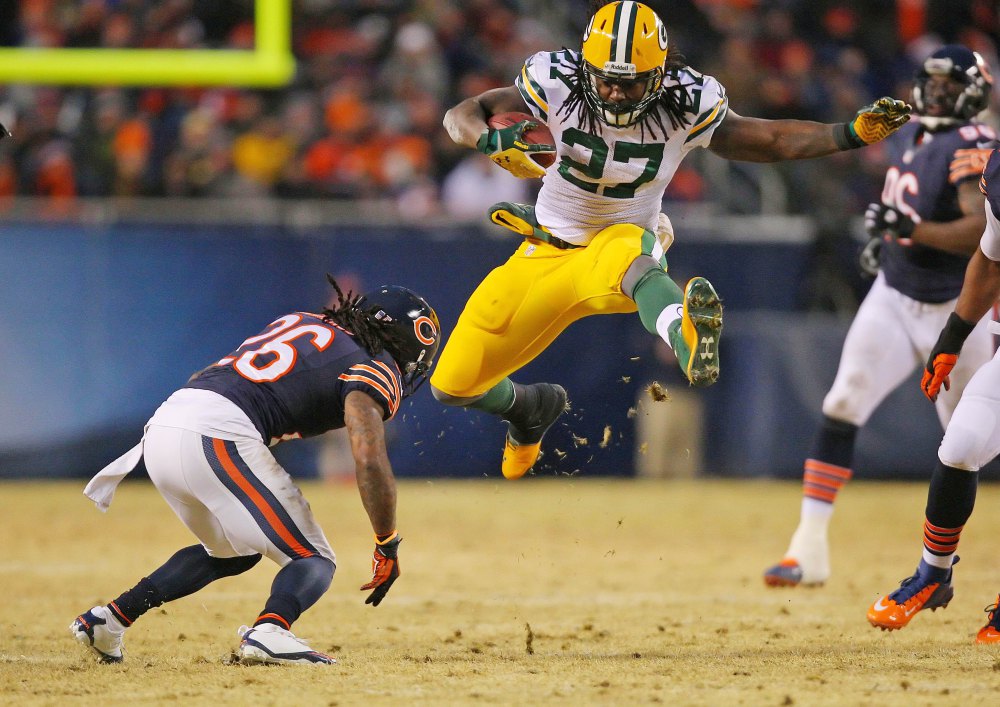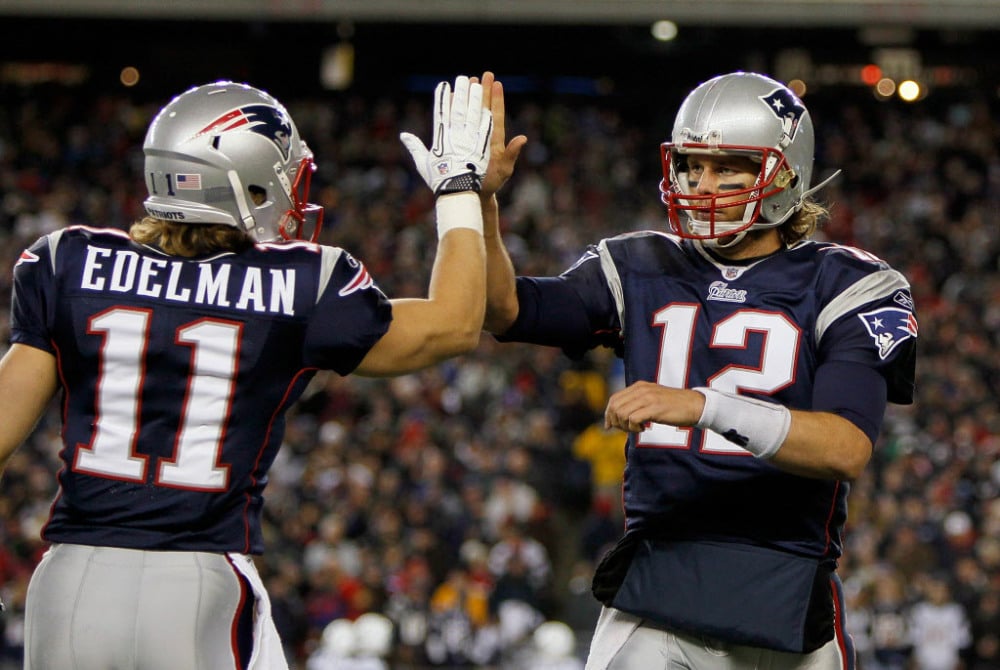Perhaps the biggest strategy in both MLB and NFL GPP’s is stacking – how you can use positions that are positively correlated to maximize your upside. In MLB, teammates (batters) are always positive; in NFL, some are positive – like a QB and his pass-catchers – and some are negative.
Such a large portion of DFS strategy that’s talked about in articles, podcasts, and other forms of content are about positive correlations, and rightfully so. Again, they maximize your upside – something that is crucial in large-field GPPs. But I had a thought and I’m going to do my best to flesh it out here: using negative correlations can also maximize your upside.
I came across this idea because I read Jonathan Bales’ book and looked at Rotoviz’s amazing correlation matrix and focused solely on the green. How can I use these positive correlations for my gain? However, some of the strongest correlations weren’t positive, and those can also be used for gain, specifically as contrarian tournament strategies. Let’s jump into a specific example.
RB and Opposing RB (-0.31)
This isn’t about correlating two players in your lineup like you would with positive correlations. Instead, it’s knowing which positions negatively affect each other and using that as a contrarian strategy. The two starting running backs are a good example of this — if you know a particular running back is going to be very highly owned in a tournament, perhaps the opposing running back could be an interesting contrarian play.
In our podcast last night, Jonathan Bales and I talked a lot about the value of being contrarian and we mentioned a great Drew Dinkmeyer quote: “What do you win when you win?” Sure, Bengals RB Jeremy Hill is going to outperform Raiders RB Latavius Murray 70% of the time (although the spread on that game is only -3). However, if an incredibly large percentage of people roster Hill and you roster Murray, you’re essentially guaranteeing value if Hill doesn’t perform or if the Raiders get up on the Bengals, even in some fluky way – you’re getting the value of a good Murray game at low ownership and you’re directly reaping the benefits of Hill lineups tanking. What do you win if you win?
QB and RB (0.09)
Okay, so this one isn’t negatively correlated, but it’s also barely positive. I actually really like this idea and will probably try it at times this season. I think a great example is going to be with the Packers – let’s say they play against the Redskins, who were the worst passing defense in the league last year, and by quite a bit. In that situation, an Aaron Rodgers-Jordy Nelson or Rodgers-Cobb stack is going to be very highly owned.
And because of the lack of correlation between QB and RB – and the fact that there are just so many touches and scoring opportunities to go around – people won’t roster Eddie Lacy as much that week. Could you envision a situation where the Packers get a bunch of scoring opportunities against a bad pass defense but then Lacy steals the touchdowns in the red zone?
This is an unique example of leveraging negative, or lack of in this case, correlation as you’re still getting a player in an incredible position – I would assume the Packers would be projected to score a lot of points in that game – but you’re getting exposure at lower ownership and again, you benefit twice from Lacy doing well and also Rodgers and his pass-catchers not getting those touchdowns. Is it risky? Sure, but risk is a must if you want to win a GPP.
QB and Opposing D (-0.46)
This one is a bit trickier because of the consistency of some of the top quarterbacks. Look at Rodgers’ last 13 games of last year.

He had a bad game against the Bills, but other than that was largely consistent. This gets into the “contrarian versus stupid” mantra – I think this could be a viable strategy against a lower-tier QB that perhaps the public is really high on because of their value.
Eli Manning could be an interesting QB to try this strategy against at some point this year, maybe even right away. Manning is going to be highly owned on the road against the Cowboys in a game that has one of the highest totals on the day. If you’ve watched Manning at all throughout his career, you know that he could have a really good game against anyone, but he can also throw multiple interceptions against anyone. Jay Cutler is maybe another good QB to try this against.
K and opposing D (-0.50)
This is actually the strongest correlation found in the Rotoviz matrix and obviously only affects you on non-DraftKings sites with a kicker spot. I think you could go either way with this negative correlation – perhaps take the kicker going against what you believe will be a high-owned defense (think Jets in Week 1), or you could also take the defense going against what you think will be a popular kicker. Though, I’m not sure how you would go about predicting kicker ownership.
There are other important correlations I won’t get into in this article – both positive and negative – and I would encourage you to check out both Rotoviz and Bales’ new book to read more on the subject. Strong correlations are important in fantasy. Although we naturally like the pretty greens of correlation charts, negative correlations are equally important. We’re always looking for ways to strike the balance between value and being contrarian in tournaments – perhaps utilizing negative correlations is a way to do that.





